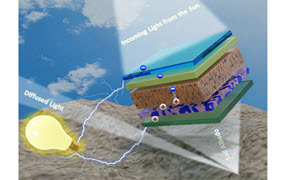New initiatives and trends at DARPA

“Did you ever have a job where leadership told you they work for you? DARPA is actually that place,” says Whitney Mason, Deputy Director of the Strategic Technology Office (STO) at the Defense Advanced Research Projects Agency (DARPA). “Program managers have the best job at DARPA because they get to lead the development of technologies that will change the world.” Mason will be discussing some of these technologies in a plenary talk at SPIE Defense + Commercial Sensing in Orlando.
“Deputies probably have the next best job because we get to assist/coach/encourage these amazing people to be wildly successful,” Mason adds. “I also get to help build the strategy of the office — one of the new things we are thinking about in STO is dual-use-by-design. This is leveraging the commercial innovation market to create great things for commercial and military use.”
What led to your interest in working with imaging sensors?
By training, I am a solid-state physicist. My post-doctoral work involved materials and device testing for infrared imagers. I continued that work at the US Army Night Vision and Electronic Sensors Directorate (NVESD) and grew into more roles. Imaging sensors allow me to act like a material scientist for absorber and optical materials, an electrical engineer for read-out integrated circuits, a process engineer as we start doing wafer stacking for increased capability, and an algorithm person as we try to turn data into information. My latest role is trying to understand neuroscience as we move into more bio-inspired imaging.
What are some of the uses for imaging sensors with multifunction capability? Can you give some examples of current sensor projects at the STO?
Military imaging requirements are different from most commercial requirements. The military needs information, not just pictures. Really, though, so do self-driving cars, factory robots and even security cameras. So those other functions could be ranging, communications, people-detection. DARPA had a program called ReImagine that integrated on-board processing with imaging arrays. Other techniques to gain those capabilities could be via agile optical capability, or in computational imaging, etc.
What do you see as the future of imaging sensors in the defense community? What would you like to see?
I am super excited right now by bio-inspired imaging. DARPA has a program called Fast Event-based Neuromorphic Cameras and Electronics, or FENCE, that samples the spatio-temporal aspects of biological imaging. We need to think on other vectors, like agile foveation, spectral discrimination, adaptive attention, etc.
What do you want attendees to learn from your talk?
DARPA has some amazing efforts going on right now. If you want to change the world, think about joining us!
| Enjoy this article? Get similar news in your inbox |
|



